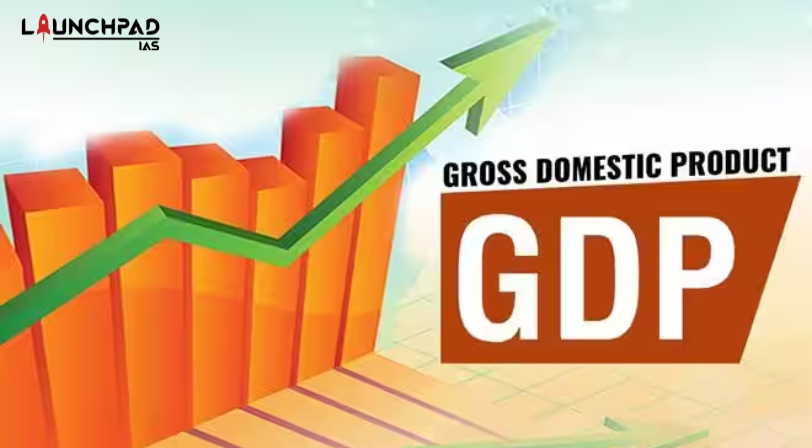- Gross Domestic Product (GDP) is defined as the total market value of all final goods and services in an economy.
- It is used to assess the size of the economy.
- The performance of the country can be measured both from one year to another as well as among other countries.
- Growth of GDP – It can be either due to an increase in actual production or due to an increase in prices of goods and services or a combination of both the above two factors.
- Nominal GDP – It is the value of GDP at the current prevailing prices.
- Real GDP – It is the value of GDP at some constant set of prices.
- It is calculated by removing the effects of price inflation from the nominal GDP using GDP or price deflator.
Real GDP growth rate = Nominal rate – Inflation (GDP Deflator)
- Since these prices remain fixed, if the real GDP changes, it is ascertained that the volume of production is changing.
- The GDP deflator – It is the ratio of nominal to real GDP.
- It gives us an idea of how the prices have moved from the base year (the year whose prices are being used to calculate the real GDP) to the current year.
GDP Deflator = Nominal GDP / Real GDP
How is GDP calculated?
- Generally, GDP is calculated by 3 different methods –
- Income method
- Expenditure method
- Production method
- In India, it is calculated through the income and expenditure method.
- The National Statistical Office (NSO) under the Ministry of Statistics and Programme Implementation (MoSPI) releases the economic growth data.
- The base year for GDP calculation is 2011-12.

Difference between the Consumer Price Index and the Wholesale Price Index:
| Wholesale Price Index | Consumer Price Index | ||
| Definition | A WPI measures and tracks the changes in the price of goods before they reach consumers. WPI tracks inflation at the producer level. | The CPI examines the weighted average of prices of a basket of consumer goods and services, such as transportation, food, and medical care. CPI captures changes in the prices levels at the consumer level. | |
| Components/ Types | Manufactured products – 64.2% Primary articles – 22.6% Fuel and power – 13.1% | CPI for Industrial Workers (IW) CPI for Agricultural Labourer (AL) CPI for Rural Labourer (RL) CPI (Rural/Urban/ Combined) | |
| Base Year | 2011-12 | 2012 | |
| Published By | Office of Economic Adviser, Ministry of Commerce and Industry | CPI –IW, AL, and RL are compiled by the Labour Bureau, Ministry of Labour and Employment. The National Statistical Office (NSO) releases the CPI-Rural, Urban, and Combined. | |
| Services | WPI does not capture changes in the prices of services | CPI captures changes in the prices of services | |
| Uses | It is a marker for price movements in the purchase of bulk inputs by traders. | The dearness allowance of Central Government employees is calculated on the basis of movement in this index. The Inflation rate will be based on the final combined CPI. | |


